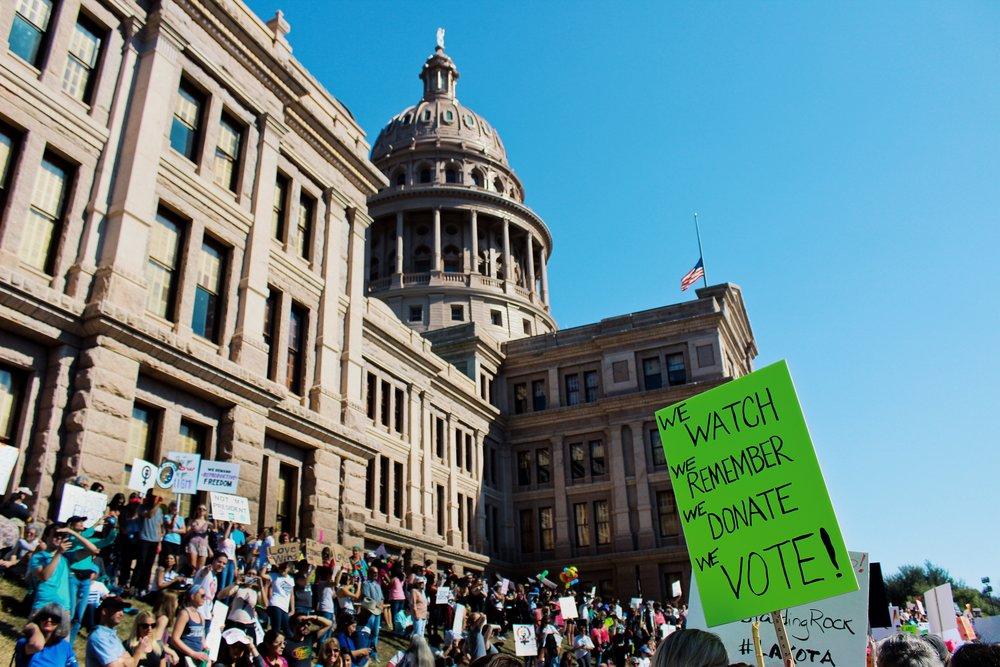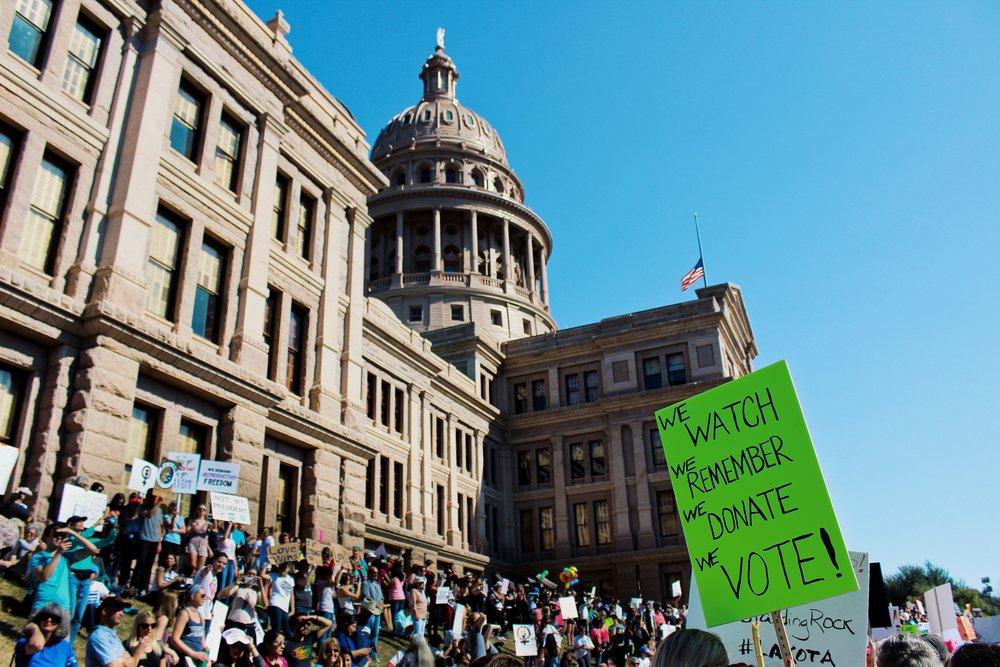Thousands of people gathered at Austin’s Capitol on Jan. 21 for the Women’s March following President Donald Trump’s Inauguration. Photo by Miranda Chiechi.
After massive protests on Nov. 9, the day after the election, and Jan. 20, the day of the Presidential Inauguration, communities are still trying to find ways to channel their beliefs into meaningful action.
Story by Zoya Zia
On Saturday, Samhita Mukhopadhyay, senior editorial director at Mic, and Rashad Robinson, executive director of Color of Change considered how communities can move from meme to protest through online activism.
Mukhopadhyay started the panel by introducing Robinson, who leads the nation’s largest online racial justice organization. Color of Change formed in the aftermath of Hurricane Katrina in 2005. Robinson recalled images of black families on roofs, begging for help as the levees broke. “The flood was caused by bad decision makers,” Robinson says. “Nobody was nervous to disappoint the black community.”
From sending an e-mail out to a thousand recipients in 2005, the organization has grown through advocacy efforts. Robinson emphasized the theory of change model in which communities respond to moments, build momentum, then pivot around and scale back to the bigger picture. “They may be responding to moments but if they do not move to something systemic, there will not be long-term change,” Robinson says.
Mukhopadhyay recognized this distinction between short-term and long-term change. Online organizing is often criticized as superficial, merely involving the signing and spreading of repetitions.
Robinson admitted that while this kind of activism exists, technology is an important tool. He referenced the efforts of the Student Nonviolent Coordinating Committee during the Civil Rights Movement. Members of the organization used phone calls through the Wide Area Telephone Service to communicate with one another. “No technology will create the change for us, but it can help amplify the theory of change that we already have,” Robinson says.
When Mukhopadhyay asked Robinson what his proudest moment has been in his work so far, he described a 2011 campaign demanding that MSNBC fire political analyst Pat Buchanan for spreading white supremacist messages. A diverse group of Color of Change members united to spread awareness and make phone calls. They eventually reached the president of the network.
Since 2011, masses of people have organized for what they believe is right. Mukhopadhyay argued that progressive media including Mic can join organizations like Color of Change on this journey of telling stories and carrying momentum into action.
Later on, Mukhopadhyay brought the audience back to election night by prompting Robinson to discuss his experiences and reflections on what transpired. “We were not deeply surprised in some ways,” Robinson says. “Our strategy was not solely focused on the top of the ticket.”
To address issues of mass incarceration and police accountability, Color of Change also engaged in district attorney races across the country. Peer-to-peer text messaging and phone calling were cornerstones of the organization’s strategy. Robinson argued that elections are “reminders of where the country is at.”
Given her experience working for a millennial-oriented publication, Mukhopadhyay noticed that many millennials were frustrated with the political system and felt that no political candidate represented their needs. With the rise in fake news, there is also an overwhelming sense of distrust in the media.
Robinson shared these concerns with Mukhopadhyay as they spent the final part of the panel discussing strategies for winning back trust. Activists have to take all the facts into account and act on what they preach. At the same time, they should understand that presence does not always equate to power. “Organizing is not just about the numbers you have, but about the power you’re building,” Robinson says.












































